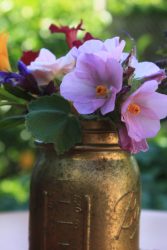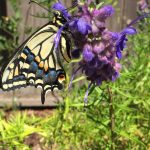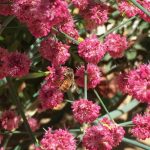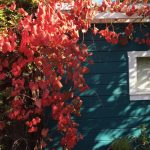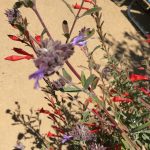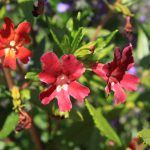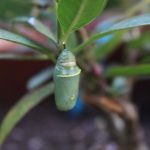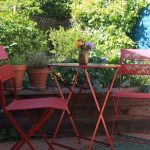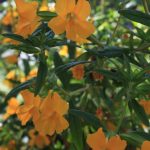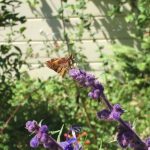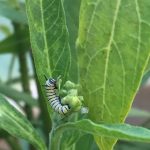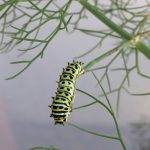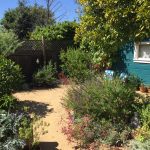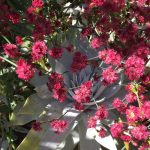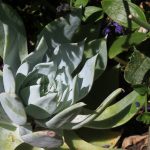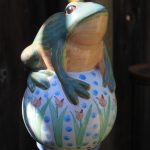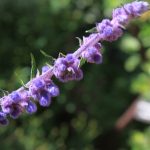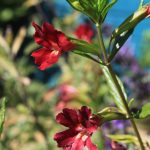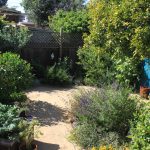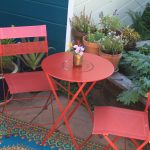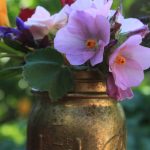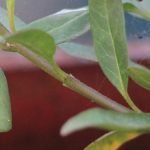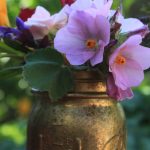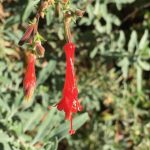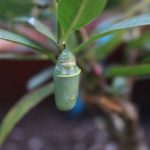Lot size: 460 sq. ft. front, 620 sq. ft. back garden, 95% native
Garden Age: Garden was installed in stages, beginning in 2015
Years on the Bringing Back the Natives Garden Tour: 3
Showcase Feature
Inspired by the Bringing Back the Natives Garden Tour, Jennifer and Dan tackled their oxalis- and crabgrass-engulfed back yard—and conquered it. (Go ahead—ask how!) This hard-working couple obtained design and plant selection guidance from Todd Gilens and Sandra Nevala-Lee, but did the installation of this attractive and inviting garden themselves. Jennifer and Dan’s passion has been to attract butterflies—they now delight in watching beautiful lepidopterans lay eggs, hatch as caterpillars, form their chrysalises, and emerge as winged adults to begin the cycle again.
Other Garden Attractions 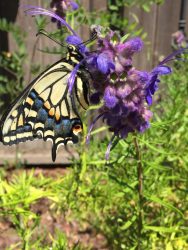
• Interested in attracting butterflies to your own garden? Check out the information that will be available on native plants that attract and provide food for butterflies and their larvae, such as mallow and pearly everlasting (painted lady butterflies); Dutchman’s pipevine (pipevine swallowtails); monkeyflowers (common checkerspot, buckeye, and field crescent); buckwheat (gray hairstreak); California false indigo (California dogface—our state butterfly); native sages (which provide nectar for all butterflies); and more.
• Don’t miss the before, during, and after photos.
Gardening for Wildlife
Monarchs and anise swallowtails lay eggs in the garden; woodland and fiery skippers are in a constant dance among the blossoms, attracted by the buckwheat, penstemon, Cleveland sage, and woolly blue curls. Larval host plants are those on which butterflies and moths can lay their eggs. The larval host plants in this Lepidoptera-friendly garden include manzanita, California lilac, coffee berry, currants, milkweed, yarrow, buckwheat, Dutchman’s pipevine, yampah, monkeyflowers, coyote mint, pearly everlasting, and California false indigo. Butterfly nectar plants include lavatera, lilac verbena, milkweed, yarrow, buckwheat, and seaside daisies. Fallen logs create shady and cool homes for salamanders. Oak titmice and bees also frequent this wildlife haven.
Garden Talks 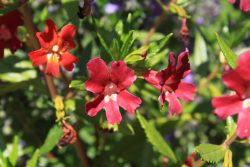
11:00 “Starting your DIY native plant garden: how to get rid of oxalis, sheet mulch, and attract butterflies” by Dan Gaff
Video
“Gardening for wildlife in a small garden” by Jen Hurley and Dan Gaff
“Gardening with California native plants: Jennifer Hurley and Dan Gaff, Alameda, California” by Jen Hurley and Dan Gaff


